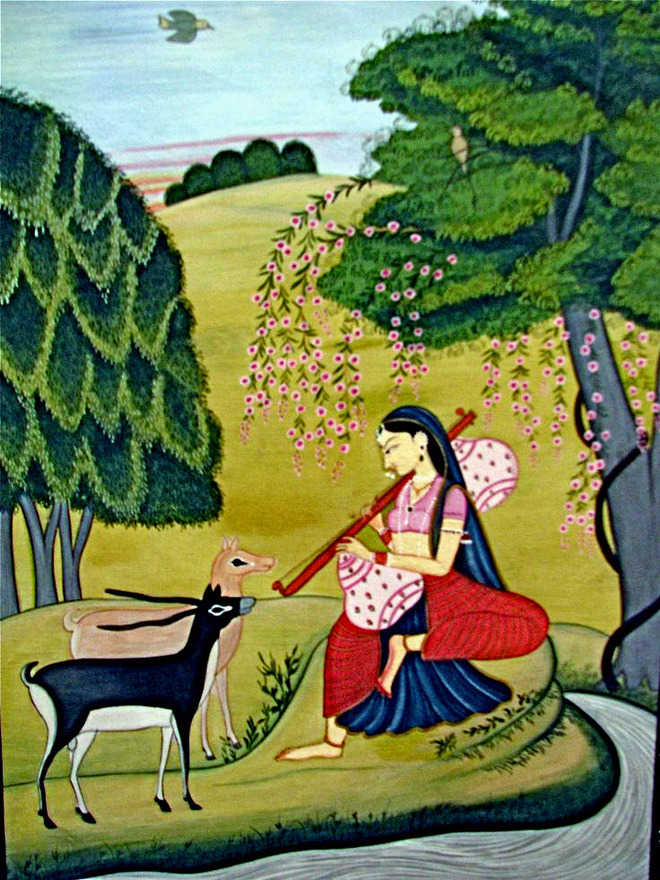Lalit Mohan
Tribune News Service
Dharamsala, December 25
Kangra paintings have got Geographical Indicator (GI) that has given them a unique identity in world market. However, the Kangra art is dying a slow death due to lack of support from the government in its own home the Kangra valley. Very few artists in Kangra were now practicing Kangra art in its true form. There were no new schools to teach children Kangra art.
Kishori Lal, a resident of Dharamsala, is among a few painters who is practicing Kangra art in its true form. Talking to The Tribune, he also rued the lack of government support for the promotion of art. He said that Kangra paintings have a unique style as everything regarding it was drawn from nature. The colors used in the paintings were made from the stones and other natural resources available in Kangra valley. Even the paper on which painting is done is prepared from pine needles and brush is made from the hair of turtle dove bird that migrates into valley in summers. It is only with the government support that the Kangra paintings are be kept alive in its true form, he said.
The unique style of Kangra paintings has developed under the aegis of Kangra and Guler states. The paintings are done in 19 natural colours, typically associated with Kangra form of art. They are created from stones and plants found in Kangra valley. It takes about a year to create the required colours as they can be generated only from natural sources existing at particular time of the year.
Besides the natural colours, gold is also used. It gives shine to the paintings. Another unique feature of this art is use of natural poison, which protects the painting from decay. The poison is prepared from smoke that gathers at the roof of religious places where holy fire burns continuously. The natural paper is created from the bio-waste of pine trees. Even the brush used in painting is prepared from wings of local bird.
There are a few private schools teaching Kangra paintings. These are being run by local art promotion societies and aided by a few NRIs.
However, the children learning Kangra style of painting are not being taught the said intricacies. Preparing colours for typical Kangra painting is a time consuming and tedious job that cannot be taught in short duration, said one of the teachers.
“We just tell them the basic style and children paint in Kangra style using water colours. In Kangra style of painting one side of face is painted. To some extent the Kangra style is close to Rajasthan paintings”, Kishori Lal said.
Some of the Kangra art experts are surviving in rural areas of Kangra. They are living a life of penury. The experts are of the view that the Kangra painting should be introduced as subject in colleges and local artists should be employed to pass over the secrets of the art to next generations. Only then this unique art form that has evolved in Kangra valley can survive.
Unlock Exclusive Insights with The Tribune Premium
Take your experience further with Premium access.
Thought-provoking Opinions, Expert Analysis, In-depth Insights and other Member Only Benefits
Already a Member? Sign In Now











